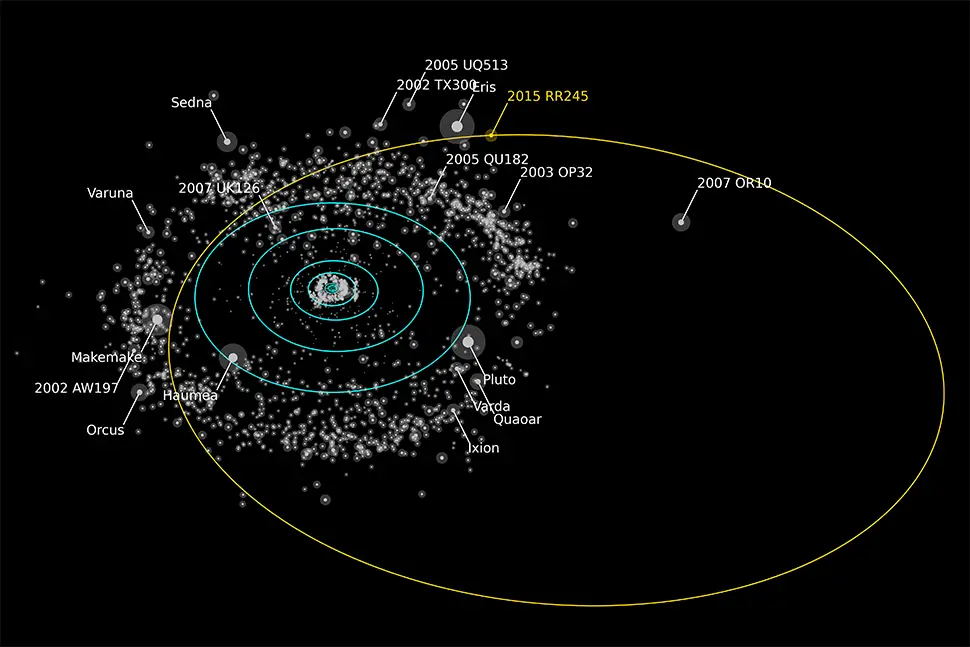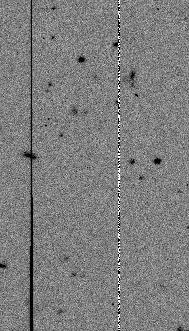
18th July 2016 New dwarf planet found beyond Neptune Astronomers have announced the discovery of 2015 RR245, a dwarf planet candidate in the Kuiper Belt with a highly elliptical orbit.
An international team of astronomers including researchers from the University of British Columbia (UBC) has discovered a new dwarf planet orbiting in the disk of small icy worlds beyond Neptune. The new object is about 700 km (435 miles) in diameter – slightly larger than Pluto's moon Charon – and has one of the largest orbits for a dwarf planet. Designated 2015 RR245 by the International Astronomical Union's Minor Planet Centre, it was found using the Canada-France-Hawaii Telescope on Maunakea, Hawaii, as part of the ongoing Outer Solar System Origins Survey (OSSOS). "Finding a new dwarf planet beyond Neptune sheds light on the early phases of planet formation," said Brett Gladman, the Canada Research Chair in planetary astronomy at UBC. "Since most of these icy worlds are incredibly small and faint, it's exciting to find a bright one that is easier to study, and which is on an interesting orbit." RR245 was first spotted in February 2016 by astronomer JJ Kavelaars of the National Research Council of Canada. The OSSOS project uses powerful computers to hunt the images, and Kavelaars was presented with a bright object moving at such a slow rate that it was clearly at least twice as far from Earth as Neptune and 120 times further from the Sun than Earth.
The vast majority of dwarf planets like RR245 were destroyed or thrown from the Solar System as the giant planets moved out to their present positions. RR245 is one of the few dwarf planets that survived to the present day, along with Pluto and Eris, the largest known dwarf planets. RR245 now circles the Sun among the remnant population of tens of thousands of much smaller trans-Neptunian worlds, most of which orbit unseen. Worlds that journey far from the Sun have exotic geology with landscapes of many different frozen materials, as the flyby of Pluto by the New Horizons spacecraft has shown. RR245 has been on a highly elliptical orbit for at least the last 100 million years, the researchers have calculated. After spending the last few centuries further than 12 billion km (80 astronomical units, or AU) from the Sun, it is now travelling towards its perihelion (closest approach) at five billion km (34 AU), which it will reach in the year 2096. Since 2015 RR245 has only been observed for one of the 733 years it takes to orbit the Sun, its origin is still unknown, as is the gradual evolution of its orbit in the far future. Its precise characteristics will be refined over the coming years, after which RR245 will be given a proper name. As its discoverers, the OSSOS team can submit their preferred name to the International Astronomical Union for consideration. RR245 is their largest discovery so far, and the only dwarf planet found by OSSOS, which has identified over 500 trans-Neptunian objects. This new find was only possible due to the exceptional observing capabilities of the Canada-France-Hawaii Telescope.
---
Comments »
|









